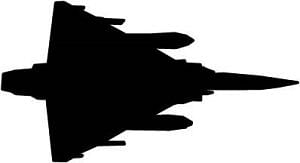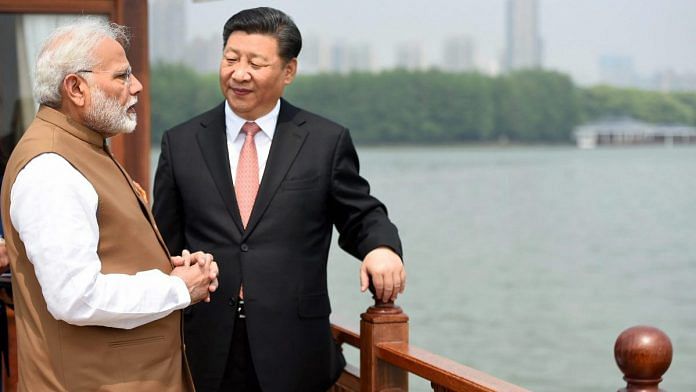With his personal position unchallenged, Xi realised that he will outlast all his competitors on the global stage, and it was probably time to take a step back.
Chaturanga and Wei Chi (also called Go) are both board games of skill, manoeuvre and deception. They hail from ancient India and China respectively. It is only fair to look at the India-China relationship in recent years through this lens, as the ‘no agenda’ Wuhan meeting between PM Narendra Modi and President Xi Jinping throws up many interesting questions and few answers. It’s a situation that fits perfectly with traditional Chinese guile and Indian ambiguity.
Commentators have been quick to take sides, and assess outcomes. Experienced diplomats like ex-foreign secretary Shiv Shankar Menon and ambassador M.K. Bhadrakumar, have argued that strategic autonomy ought to remain the beacon of India’s engagement with the great powers, and state the advantages of moving from a confrontationist posture to a cooperative, and even collaborative one, with China.
However, traditional skeptics like Brahma Chellaney and Mohan Malik have offered cautionary commentaries and statements on the folly of expecting any major strategic outcomes from the talks. It is in this argumentative milieu that this writer, a ‘detached’ China-watcher, will attempt to unmask what could have led to this entente and assess some outcomes.
In a 1961 Central Military Commission meeting, Mao compared India’s Forward Policy to a ‘strategic move’ across the centre line in a game of chess that marked the crossing of the Chu Han boundary (During the Chu-Han War in the early Western Han Dynasty, there were many battles between Liu Bang, Emperor Gaozu of Han, and Xiang Yu, the King of Chu in and around the Yingyang area. Due to historical reasons, the chasm became the border between Chu and Han).
Mao contemplated, “What should we do? We can also set out a few pawns on our side of the river. If they don’t then cross over, that’s great. If they do cross, we’ll eat them up.”
He then went on to offer guidance to his generals of creating an interlocking pattern around Indian positions, from which it would be impossible for the latter to extricate themselves. The operational outcomes of these strategies are now part of the ghosts of 1962 that India has exorcised incrementally over the decades by standing up to Chinese aggression and assertiveness.
The firefight at Nathula and Chola in 1967; the Sumdorong Chu incident and the recent stand-off at Doklam are some examples of India standing firm in the face of attempted coercion by the People’s Liberation Army (PLA). Concurrently, there have also been occasions when the PLA’s moves have taken India by surprise — in Depsang, Chumar and two areas called Fish Tail 1 and Fish Tail 2 in Arunachal Pradesh.
Fast forward to the present, to the aftermath of the Doklam crisis, and the Wuhan meeting. Both PM Modi and President Xi had different compulsions to go ahead with the meeting. I will argue that Xi’s compulsions were greater — India’s accelerated engagement with US, Japan, France, Australia, Vietnam, Malaysia and Indonesia; multiple hiccups over the Belt and Road Initiative in Sri Lanka and Pakistan; increasing opposition to the BRI from Europe; and a general global discomfort with Chinese assertiveness and revisionist tendencies.
With his personal position unchallenged, Xi has realised that he will outlast all his competitors on the global stage, and that it was probably time to take one step back. So he did two things. First, he endorsed a possible rapprochement between North and South Korea, and second, he attempted to slow down India’s ongoing and potential collaborative partnerships, which gathered fair steam in the months following the Doklam crisis.
What were PM Modi’s compulsions to play along with this optics-heavy meeting? The first is that given the reports coming in that the PLA had no intentions of slowing down on its ‘encroachment’ in Bhutan, with no protests from Bhutan, it was highly possible that the next face-off would have a much higher potential for an avoidable firefight between a confident Indian Army and a PLA that would strain to ‘teach the Indians a lesson’.
From a political perspective, this was something the PM Modi could not afford, particularly since he will be facing the ballot in 2019, from a position that many reckon will not be as dominant as in 2014.
The second reason — and this is something that I have written about earlier — is about competing constituencies within India’s strategic establishment that seek to constantly benchmark ‘strategic autonomy’ with an emotive argument of ‘self-respect’, and a realist’s view of looking at various strategic partnerships as a more plausible means of building comprehensive national power in pursuit of core national interests.
China has clearly articulated its core national interests, and all its moves must be assessed against them.
 Arjun Subramaniam is a retired Air Vice Marshal of the IAF, and currently, a visiting fellow at Oxford.
Arjun Subramaniam is a retired Air Vice Marshal of the IAF, and currently, a visiting fellow at Oxford.






